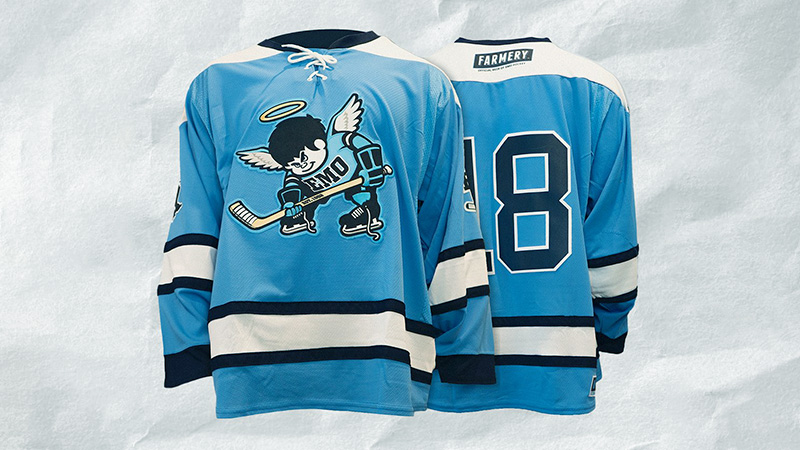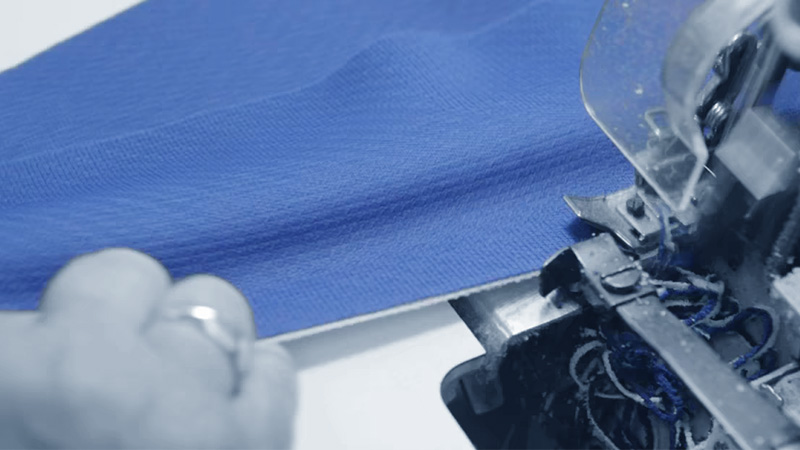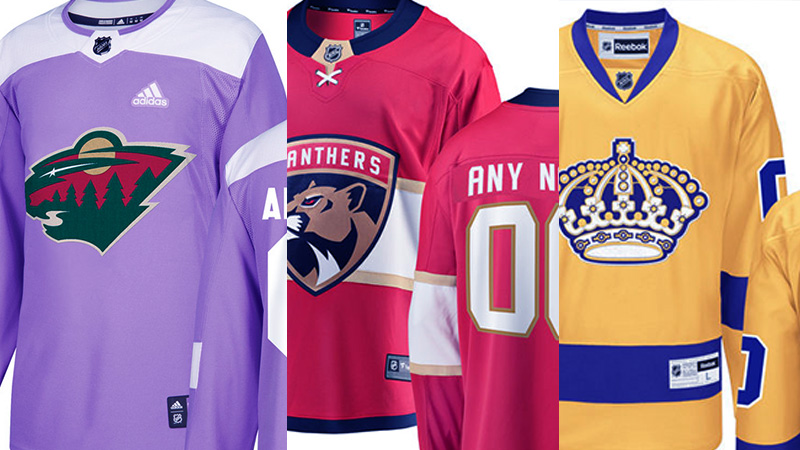Hockey jerseys, iconic symbols of team spirit and fan dedication, often come with a hefty price tag that leaves enthusiasts wondering why they’re so expensive.
Behind the embroidered logos and customized numbers lies a complex web of factors that drive up the cost. In this exploration, we’ll delve into the elements that contribute to the seemingly high price of hockey jerseys.
From the premium materials designed for performance to the licensing fees ensuring official branding, each aspect plays a role in determining the final price.
Customization options, the allure of limited editions, and the connection between brand and cost all shape the value of these cherished garments.
Understanding the question ‘Why are hockey jerseys so expensive?’ can help fans and collectors appreciate the craftsmanship and dedication that goes into creating these beloved pieces of sports memorabilia. Stay focused.

How Much Does An Original Hockey Jersey Cost?
The cost of an original hockey jersey can vary widely depending on several factors.
Authentic jerseys from professional teams, such as those worn by NHL players, tend to be more expensive and can range from $150 to $400 or more.
These jerseys are typically made with high-quality materials and are identical to what the players wear on the ice.
Replica jerseys, which are also officially licensed but are not identical in quality and detail to the authentic versions, are generally more affordable, with prices ranging from $80 to $150.
Vintage or retro jerseys from older seasons or defunct teams can be collector’s items and may command higher prices, sometimes in the hundreds of dollars or even more.
Custom jerseys with personalized names and numbers may also come at an additional cost, typically around $50 or more.
The price of an original hockey jersey depends on factors like the team, brand, quality, and any customizations, so it’s essential to research and compare options to find one within your budget.
Materials Used in Making Hockey Jerseys

Hockey jerseys are typically made from a combination of materials designed to provide comfort, durability, and breathability for players during games. The primary materials used in making hockey jerseys include:
Polyester
Most hockey jerseys are predominantly made from polyester fabric. Polyester is known for its moisture-wicking properties, which help players stay dry by pulling sweat away from the body.
It is also lightweight and resistant to stretching, making it ideal for the rigors of hockey.
Mesh
Mesh panels or inserts are often incorporated into the design of hockey jerseys to enhance ventilation and airflow.
These mesh areas are strategically placed in areas where players tend to sweat the most, such as under the arms and along the sides.
Spandex or Lycra
Some hockey jerseys feature spandex or Lycra components to provide stretch and flexibility, allowing players to move comfortably on the ice.
These materials are often found in the collar, cuffs, and bottom hem of the jersey.
Reinforced Materials
Certain parts of the jersey, such as the elbows and shoulders, may have reinforced fabric or padding to protect players from impacts and abrasions during the game.
Twill or Tackle Twill
The numbers, team logos, and player names on hockey jerseys are typically made from twill fabric, which is a durable, woven material.
Tackle twill is often used for its thickness and durability, and it is stitched onto the jersey for a high-quality finish.
Sublimation Printing
To achieve vibrant and long-lasting graphics, sublimation printing is often used to apply team logos and designs onto the fabric. Sublimation allows for intricate designs without adding extra weight to the jersey.
The combination of these materials ensures that hockey jerseys are comfortable, functional, and able to withstand the demands of the sport.
The specific blend of materials can vary among different jersey brands and models, but the goal is always to provide players with a jersey that performs well on the ice.
Why Are Hockey Jerseys So Expensive?
Hockey jerseys can be relatively expensive for several reasons, including the following key points:
High-Quality Materials
Authentic hockey jerseys are crafted from premium materials designed to withstand the rigors of the sport.
These materials are chosen for their durability, moisture-wicking properties, and ability to provide comfort during games.
The cost of sourcing and using these quality materials contributes significantly to the overall price of the jersey.
Licensing and Branding
Officially licensed NHL jerseys and those of other professional leagues include team logos, player names, and numbers that are produced under licensing agreements.
These licenses come at a cost, and the branding and customization processes add to the overall expense.
Manufacturing Complexity
The construction of hockey jerseys is more complex than that of everyday clothing due to the need for reinforced areas like elbows and shoulders, as well as specialized stitching for logos and numbers.
The intricate design and manufacturing processes increase production costs.
Authenticity and Collectibility
Many fans and collectors value the authenticity of jerseys worn by professional players, which often drives up the price.
Limited-edition or game-worn jerseys, in particular, can command premium prices among collectors.
Customization
The ability to personalize jerseys with specific player names and numbers, often requested by fans, requires additional time and effort in production. Customization services come with an added cost.
Branding and Team Support
Part of the price of a hockey jersey goes to support the team, whether it’s at the professional or amateur level.
Purchasing an official jersey is a way for fans to show their allegiance and directly contribute to their favorite team.
Retail Markup and Distribution Costs
The retail price of hockey jerseys typically includes markup by manufacturers, wholesalers, and retailers. Additionally, the cost of shipping and distributing these bulky items can contribute to their overall expense.
The combination of high-quality materials, licensing fees, complex manufacturing processes, customization options, branding, and distribution costs all contribute to the relatively high price of hockey jerseys.
Factors Affecting the Price of Hockey Jerseys
The price of hockey jerseys can vary widely based on several factors, including:
Authenticity
Authentic jerseys, identical to those worn by professional players, tend to be more expensive than replicas or fan jerseys. Authentic jerseys are made with higher-quality materials and construction.
Licensing
Jerseys featuring official team logos and branding require licensing agreements, and the associated fees can add to the overall cost.
Customization
Adding personalized names and numbers to a jersey often comes at an extra cost. The complexity of customization and the type of stitching used can influence the price.
Quality of Materials
The type and quality of materials used in the jersey’s construction play a significant role in its price. Premium materials, such as moisture-wicking fabrics, can increase the cost.
Branding and Logos
The number and complexity of logos and branding elements on the jersey can affect the price. Some jerseys may have additional patches, sponsor logos, or commemorative elements.
Player and Team
Jerseys featuring star players or popular teams tend to be more expensive due to higher demand. Limited-edition or throwback jerseys can also command higher prices.
Manufacturer and Brand
Different manufacturers and brands offer jerseys at various price points. Established and well-known brands may charge more for their reputation and quality.
Retailer Markup
The price of a hockey jersey can also be influenced by the retailer’s markup. Some retailers offer discounts or promotions that can affect the final price.
Special Features
Some jerseys come with special features like reinforced elbows, extra padding, or built-in neck gaiters for added protection or comfort, which can increase the price.
Availability
The availability of a particular jersey, especially if it’s from a past season or a rare design, can affect its price. Limited availability can drive up demand and prices among collectors.
Size and Fit
Larger sizes or jerseys with extended sizing options may cost more due to the additional materials required.
Game-worn Collectible Jerseys
Game-worn jerseys or jerseys with historical significance often have a premium price due to their rarity and collector’s value.
Manufacturing Location
Jerseys made in countries with higher labor and production costs may be priced differently than those made in countries with lower costs.
Shipping and Import Fees
If purchasing jerseys internationally, shipping costs and import fees can contribute to the final price.
Considering these factors, it’s important for consumers to research and compare options to find a hockey jersey that meets their budget and preferences while still providing the desired level of authenticity and quality.
What Are the Most Expensive Brands of Hockey Jerseys?

While specific brands may have higher-priced jerseys, it’s essential to note that the cost can also depend on the team, league, and whether the jersey is an authentic player version or a replica.
Some of the brands known for producing higher-priced hockey jerseys include:
Adidas
Adidas is the official supplier of NHL jerseys, and their authentic jerseys tend to be at the higher end of the price range due to their association with professional hockey.
Fanatics
Fanatics produces a range of NHL jerseys, including replicas and authentic versions. Authentic jerseys from Fanatics can also be relatively expensive.
Reebok
While Reebok was previously the official supplier of NHL jerseys, they are still a recognizable brand in the hockey jersey market. Their vintage and throwback jerseys may also have premium pricing.
Mitchell & Ness
Known for their vintage and retro sports apparel, Mitchell & Ness offers high-quality, premium-priced hockey jerseys, particularly in the throwback category.
CCM
CCM (Canadian Cycle & Motor Co.) is a well-known hockey equipment manufacturer that also produces vintage-style hockey jerseys, which can be on the higher end of the price scale.
Old Time Hockey
This brand specializes in retro and vintage-style hockey jerseys, often with a focus on classic NHL team designs.
Please note that the landscape of hockey jersey brands may have evolved over time. Prices can also fluctuate based on factors like the release of new designs, special editions, and licensing agreements.
FAQs
Why are authentic hockey jerseys more expensive than replicas?
Authentic hockey jerseys are made with premium materials, identical to those worn by professional players.
They involve higher manufacturing costs due to enhanced durability and quality, while replicas are designed for affordability with less attention to detail.
Do licensing fees contribute to the high cost of hockey jerseys?
Yes, licensing fees are a significant factor. Officially licensed jerseys feature team logos and branding, requiring licensing agreements that add to the overall expense.
These fees ensure the jerseys are officially endorsed and include authentic team elements.
How does customization affect the price of a hockey jersey?
Customization, such as adding player names and numbers, increases the price. It involves extra labor, specialized stitching, and personalized elements.
Customization allows fans to create unique jerseys but adds to the overall production cost.
Why do some limited-edition or commemorative jerseys cost more?
Limited-edition or commemorative jerseys are often priced higher due to their rarity and collector’s value.
These jerseys may feature unique designs, special patches, or historical significance, making them more desirable among fans and collectors.
Is the quality of materials a significant factor in the cost of hockey jerseys?
Yes, the quality of materials is crucial. Hockey jerseys are made with high-quality, moisture-wicking fabrics designed for comfort and durability during games.
These premium materials are more expensive to source and use, contributing to the overall price of the jersey.
Wrapping Up
the expense of hockey jerseys is the result of a combination of factors, including quality, authenticity, customization, licensing, and brand recognition.
These elements collectively contribute to the high cost, ensuring that when fans don their jerseys, they’re not just wearing a piece of clothing but also displaying their unwavering support for their team and the sport they love.
While they may be an investment, these jerseys stand as tangible symbols of passion and loyalty in the world of hockey. Thank you very much.







Benjamin Kenyon